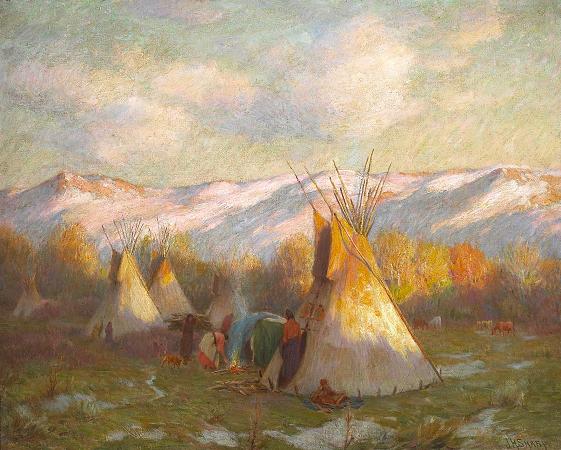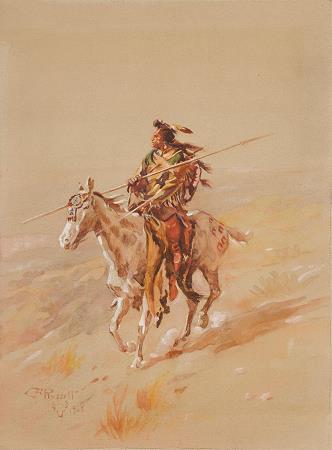Crow Nation. The Crow, whose autonym is Apsaalooke, also spelled Absaroka, are Native Americans living primarily in southern Montana. Today, the Crow people have a federally recognized tribe, the Crow Tribe of Montana, with an Indian reservation located in the south-central part of the state. The Crow are a Plains tribe, who speak the Crow language, part of the Missouri River Valley branch of Siouan languages. Of the 12,000 enrolled tribal members, an estimate 3,000 spoke the Crow language in 2007. In historical times, the Crow lived in the Yellowstone River valley, which extends from present-day Wyoming, through Montana and into North Dakota, where it joins the Missouri River. Since the 19th century, Crow people have been concentrated on their reservation established south of Billings, Montana. Today, they live in several major, mainly western, cities. Tribal headquarters are located at Crow Agency, Montana. The tribe operates the Little Big Horn College. The name of the tribe, Asackie, which translates as children of the large-beaked bird, was given to them by the Hidatsa, a neighboring Siouan-speaking tribe. French interpreters translated the name as gens du corbeaux, and they became known in English as the Crow. Other tribes also refer to the Apsáalooke as crow or raven in their own languages. The early home of the Crow-Hidatsa ancestral tribe was near Lake Erie in what is now Ohio. Driven from there by armed, aggressive neighbors, they settled for a while south of Lake Winnipeg in Manitoba. Later the people moved to the Devil's Lake region of North Dakota before the Crow split from the Hidatsa and moved westward. The Crow have largely pushed westward due to intrusion and influx of the Cheyenne and subsequently the Sioux, also known as the Lakota. To acquire control of their new territory, the Crow warred against Shoshone bands, such as the Bikkaashe, or People of the Grass Lodges, and drove them westward. The Crow allied with local Kiowa and Plains Apache bands. The Kiowa and Plains Apache bands later migrated southward, and the Crow remained dominant in their established area through the 18th and 19th centuries, the era of the fur trade. Their historical territory stretched from what is now Yellowstone National Park and the headwaters of the Yellowstone Riverblack to the west, north to the Musselshell River, then northeast to the Yellowstone's mouth at the Missouri River, then southeast to the confluence of the Yellowstone and Powder rivers, south along the South Fork of the Powder River, confined in the SE by the Rattlesnake Mountains and westwards in the SW by the Wind River Range. Their tribal area included the river valleys of the Judith River, Powder River, Tongue River, Big Horn River and Wind River as well as the Bighorn Mountains, Pryor Mountains, Wolf Mountains and Absaroka Range. Once established in the Valley of the Yellowstone River and its tributaries on the Northern Plains in Montana and Wyoming, the Crow divided into four groups: the Mountain Crow, River Crow, Kicked in the Bellies, and Beaver Dries its Fur. Formerly semi-nomad hunters and farmers in the northeastern woodland, they adapted to the nomadic lifestyle of the Plains Indians as hunters and gatherers, and hunted bison. Before 1700, they were using dog travois for carrying goods. From about 1740, the Plains tribes rapidly adopted the horse, which allowed them to move out on to the Plains and hunt buffalo more effectively. However, the severe winters in the North kept their herds smaller than those of Plains tribes in the South. The Crow, Hidatsa, Eastern Shoshone and Northern Shoshone soon became noted as horse breeders and dealers and developed relatively large horse herds. At the time, other eastern and northern tribes were also moving on to the Plains, in search of game for the fur trade, bison, and more horses. The Crow were subject to raids and horse thefts by horse-poor tribes, including the powerful Blackfoot Confederacy, Gros Ventre, Assiniboine, Pawnee, and Ute. Later they had to face the Lakota and their allies, the Arapaho and Cheyenne, who also stole horses from their enemies. Their greatest enemies became the tribes of the Blackfoot Confederacy and the Lakota-Cheyenne-Arapaho alliance. In the 18th century, pressured by the Ojibwe and Cree peoples, who had earlier and better access to guns through the fur trade, the Crow had migrated to this area from the Ohio Eastern Woodland area of present-day Ohio, settling south of Lake Winnipeg. From there, they were pushed to the west by the Cheyenne.
more...




